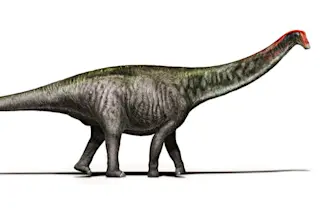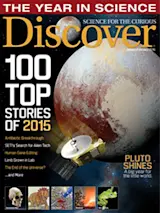(Credit: Davide Bonadonna, Milan, Italy)
Davide Bonadonna, Milan, Italy
What science took away, science has returned to us: Long live the thunder lizard known by children of every age as Brontosaurus.
The dinosaur crashed onto the scene when paleontology was still a young and undisciplined field. In 1883, Brontosaurus excelsus — the first long-necked, whip-tailed sauropod to be reconstructed from a fossilized partial skeleton — captured the public’s imagination. But that specimen was found at the peak of the heated “Bone Wars,” when scientific rigor often took a back seat to finding and naming the most fossils the fastest.
The popular image of Brontosaurus as a massive, gentle giant has endured in books, movies, and cartoons, reflecting its iconic status despite scientific controversies. This portrayal taps into the collective imagination, securing Brontosaurus a place in cultural history. But do we know if Brontosaurus is even real?
As early as 1903, ...















